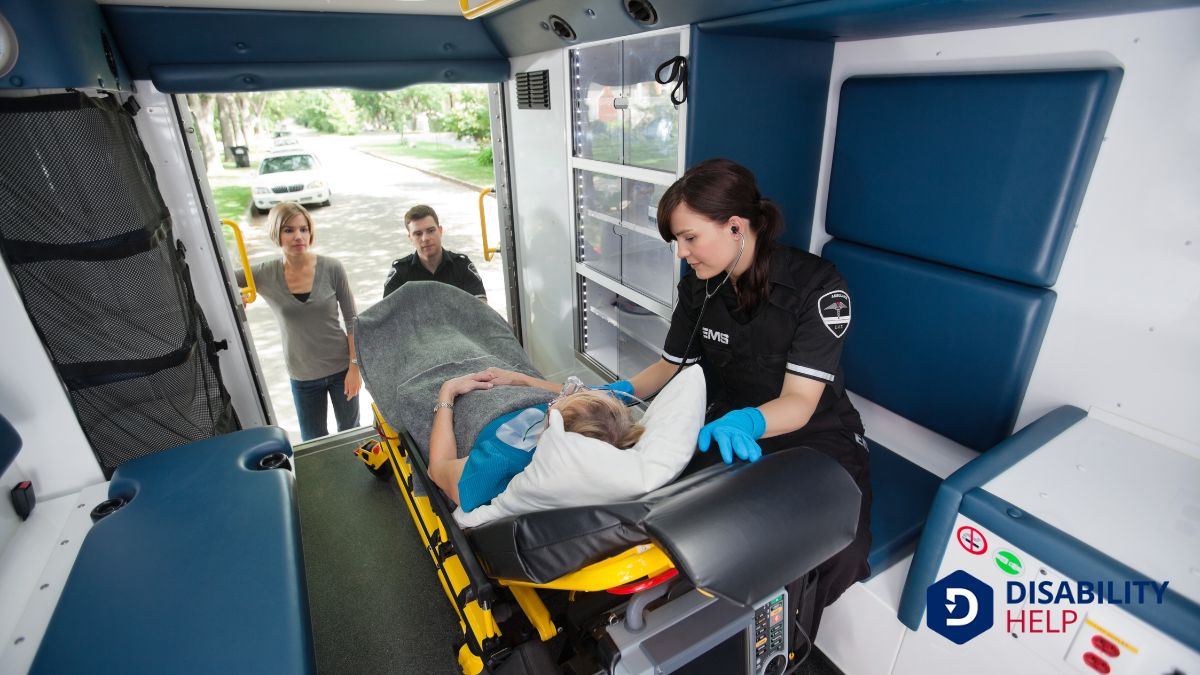Let's explore the world of Non-Emergency Medical Transportation (NEMT) together. It's a service many of us might not think about until we or someone we are familiar with needs it. NEMT helps those without reliable transportation access medical care, ensuring they don't miss essential appointments. Whether it's seniors, individuals with disabilities, or low-income patients, NEMT is a lifeline. Why is this service so important, and what challenges does it face?
Key Takeaways
- Non-Emergency Medical Transportation (NEMT) provides transportation for medical appointments to individuals lacking reliable transportation options.
- NEMT includes transportation modes like vans, cars, and public transit to ensure healthcare access.
- The service supports appointment attendance, improving health outcomes through timely medical care access.
- NEMT benefits seniors, individuals with disabilities, low-income individuals, and rural residents with limited public transit.
- NEMT operates through scheduled appointments and accommodates specific medical transportation needs.
Understanding the Basics of NEMT

Non-Emergency Medical Transportation (NEMT) is a critical service that guarantees individuals without access to reliable transportation can still attend their medical appointments.
We all know how important it is to maintain our health, and NEMT ensures no one misses out on necessary care due to transportation barriers. This service covers a variety of transportation modes, like vans, cars, and even public transit, depending on the needs of those we serve.
As we explore NEMT, we need to understand that it's not just about moving from point A to point B.
It's about providing a lifeline to those in need, helping them maintain their health and independence. By understanding the basics, we can better support and advocate for effective transportation solutions.
Key Benefits of Non-Emergency Medical Transportation
Let's explore how non-emergency medical transportation benefits us all by improving appointment attendance and enhancing patient accessibilityThe design of products, devices, services, or environments to be usable by people with disabilities.....
We can see how these services provide cost-effective solutions, ensuring that everyone gets the care they need without unnecessary financial strain.
Improved Appointment Attendance
When reliable transportation isn't a concern, patients are far more likely to attend their medical appointments consistently. We all know how important regular check-ups and follow-ups are for effective healthcare.
Non-emergency medical transportation (NEMT) guarantees that transportation barriers don't stand in the way of our health. By providing dependable rides, NEMT helps reduce missed appointments, allowing us to maintain our treatment schedules and address health issues promptly.
Reliable transport can lead to better health outcomes as patients stick to their prescribed care plans. For those of us managing chronic conditions, this consistency is vital.
It's not just about showing up; it's about being proactive in our health journey. By reducing the stress of transportation logistics, we can focus more on our well-being.
Enhanced Patient Accessibility
While access to healthcare is a fundamental need, not everyone has the means to easily reach their medical providers. Many face challenges due to mobility issues, lack of public transportation, or geographical barriers.
Non-Emergency Medical Transportation (NEMT) plays an essential role in bridging this gap. By providing reliable transport, NEMT guarantees patients can attend appointments, receive treatments, and maintain their health without unnecessary stress.
We understand that getting to a doctor's office shouldn't be an obstacle to good health. With NEMT services, we enhance patient accessibility by offering tailored solutions for those who need it most.
Whether it's a routine check-up or specialized care, NEMT helps remove transportation as a barrier, empowering us to prioritize our well-being confidently.
Cost-Effective Transportation Solutions
How can we guarantee that healthcare remains affordable without compromising on quality? Non-Emergency Medical Transportation (NEMT) offers cost-effective solutions that help us achieve just that.
By providing reliable and affordable transportation to medical appointments, NEMT reduces missed appointments and unnecessary emergency room visits.
Let's explore:
- Reduced Healthcare Costs: By ensuring patients make their scheduled appointments, NEMT minimizes costly complications and hospital admissions.
- Efficient Resource Utilization: With NEMT, healthcare facilities can manage patient flow smoothly, optimizing staff and resources.
- Patient Satisfaction: Affordable transport enhances patient experience by reducing stress and offering timely access to care.
Who Can Benefit From NEMT Services?
Many individuals can benefit from Non-Emergency Medical Transportation (NEMT) services, particularly those who face challenges accessing traditional transportation options.
Seniors and people with disabilities often find it difficult to travel independently due to mobility issues. NEMT services provide an essential link, ensuring they can attend medical appointments and maintain their health. Patients undergoing regular treatments, like dialysisA treatment that removes waste and excess fluid from the blood when the kidneys are no longer able t... or chemotherapy, also rely on NEMT to avoid missing critical sessions.
Additionally, low-income individuals without personal vehicles can use these services to overcome transportation barriers, receiving timely care without added stress.
For rural residents with limited public transit, NEMT bridges the gap by offering reliable transportation to healthcare facilities.
How NEMT Services Operate
As we explore how NEMT services operate, let's start with how we schedule appointments. We typically book these services through a phone call or an online portal, ensuring a convenient match between the rider's needs and available vehicles.
The types of NEMT vehicles range from standard cars to specially equipped vans, catering to various mobility requirements.
Scheduling NEMT Appointments
When considering how we schedule Non-Emergency Medical Transportation (NEMT) appointments, it's crucial to streamline the process for both convenience and efficiency.
We want our scheduling to be straightforward and accessible. Here's how we can achieve it:
- Online Booking: We should provide an intuitive online platform where patients can easily request their rides. This reduces phone call backlogs and allows for quick confirmations.
- Advanced Planning: Encouraging patients to schedule in advance helps us allocate resources effectively, ensuring timely service and avoiding last-minute adjustments.
- Automated Reminders: Implementing automated reminders via text or email keeps everyone informed of upcoming appointments, reducing no-shows and ensuring smooth operations.
Types of NEMT Vehicles
In the world of Non-Emergency Medical Transportation (NEMT), we've got diverse vehicle types to meet the specific needs of our patients.
First, there are sedans, perfect for those who require a basic, comfortable ride without any special equipment.
For individuals needing wheelchair access, we use wheelchair-accessible vans, equipped with ramps or lifts to guarantee safe and easy entry. These vans are essential for maintaining mobility and dignity.
If someone requires stretcher transport, we've specially adapted vehicles that cater to such needs, providing a secure and smooth journey.
Our goal is to make certain every patient travels safely and comfortably.
Each vehicle type plays a significant role in our operations, allowing us to accommodate a wide range of medical transportation requirements.
Challenges Facing NEMT Providers
Despite the significant role non-emergency medical transportation (NEMT) plays in guaranteeing patients reach their healthcare appointments, providers face substantial challenges. Addressing these issues is imperative for maintaining reliability and efficiency.
Here are three main challenges:
- Regulatory Compliance: Managing the complex web of federal, state, and local regulations is time-consuming and costly. Providers must verify that both vehicles and drivers meet all requirements, which can vary widely.
- Cost Management: Operating NEMT services requires balancing rising fuel prices, vehicle maintenance, and staff wages. These costs can strain budgets, especially when reimbursement rates from MedicaidA U.S. government program that provides health coverage to eligible low-income individuals, includin... or insurers are low.
- Scheduling and Coordination: Guaranteeing timely pickups and drop-offs involves precise scheduling. Providers often struggle with last-minute cancellations, traffic delays, and coordinating rides for multiple patients simultaneously.
Understanding these challenges helps us appreciate the effort required to deliver essential NEMT services.
Future Trends in Non-Emergency Medical Transportation

As we look ahead, the future of non-emergency medical transportation (NEMT) promises exciting advancements driven by technology and innovation.
We're seeing a shift towards integrating artificial intelligence and machine learning to optimize routes and reduce wait times. This guarantees patients get to their appointments promptly and efficiently.
In addition, telehealth partnerships are emerging, allowing seamless coordination between healthcare providers and transportation services.
Electric and autonomous vehicles are also on the horizon, aiming to reduce emissions and increase accessibility.
We're moving towards a more patient-centered approach, focusing on personalized care and convenience.
Conclusion
To conclude, we've explored how Non-Emergency Medical Transportation (NEMT) is essential for ensuring that everyone has equal accessThe principle that all individuals, including those with disabilities, should have equal opportunity... to healthcare. By understanding its basics, benefits, and the individuals who rely on it, we can appreciate its impact on community health. While NEMT providers face challenges, ongoing innovations promise a brighter future. Let's continue supporting and improving these services, so we can break down transportation barriers and empower individuals to maintain their health and independence.






